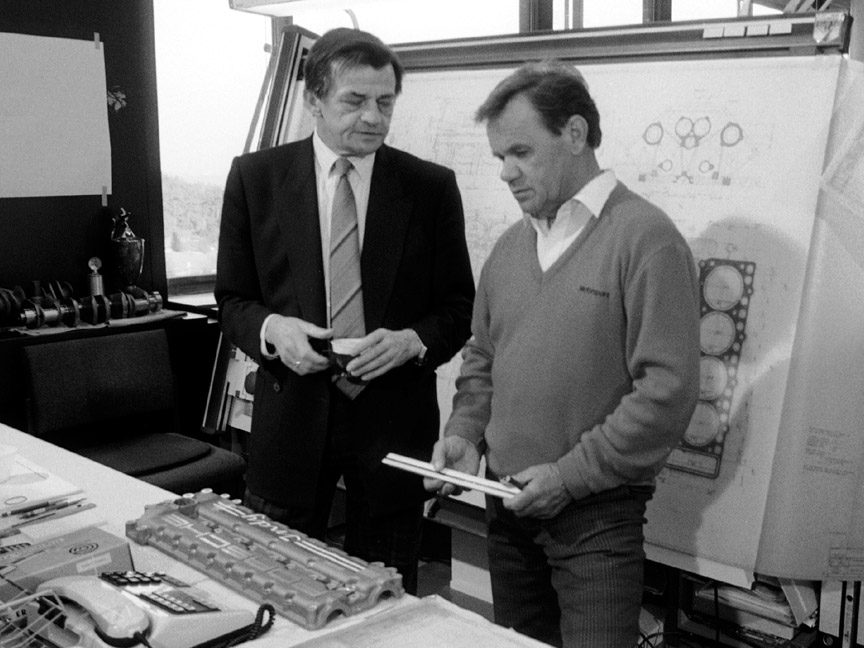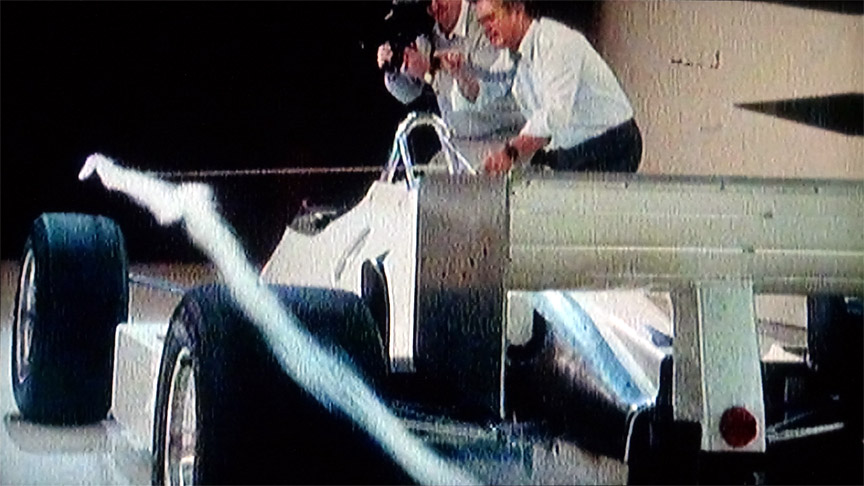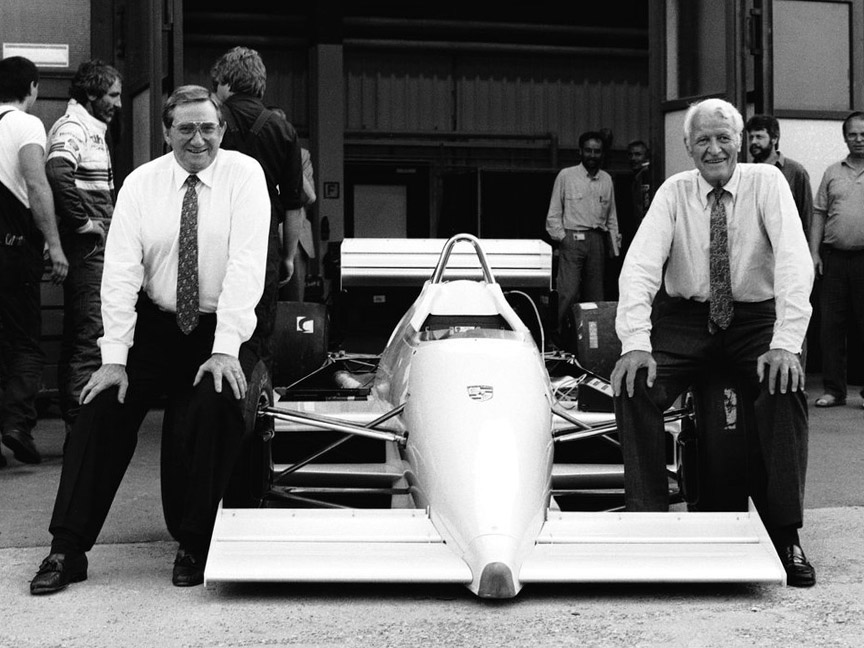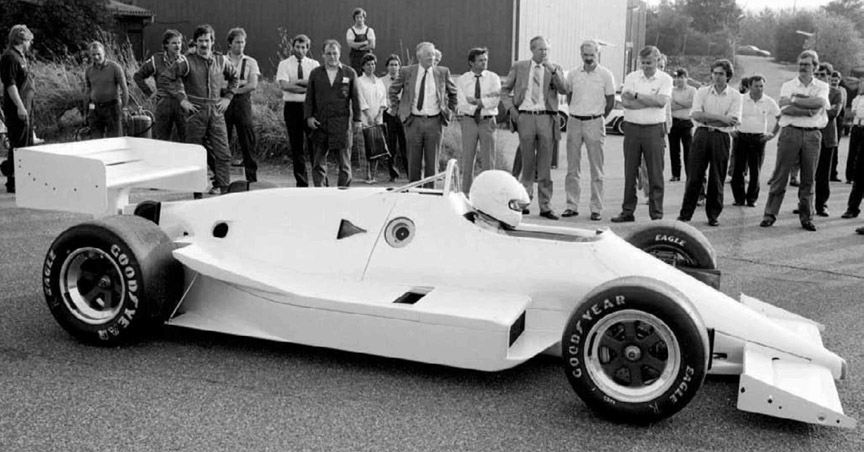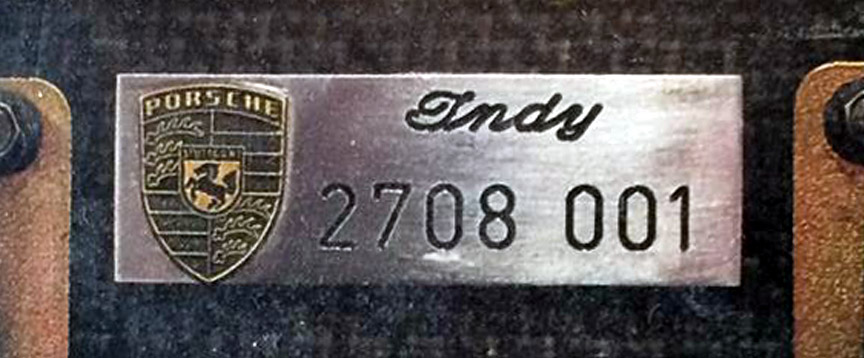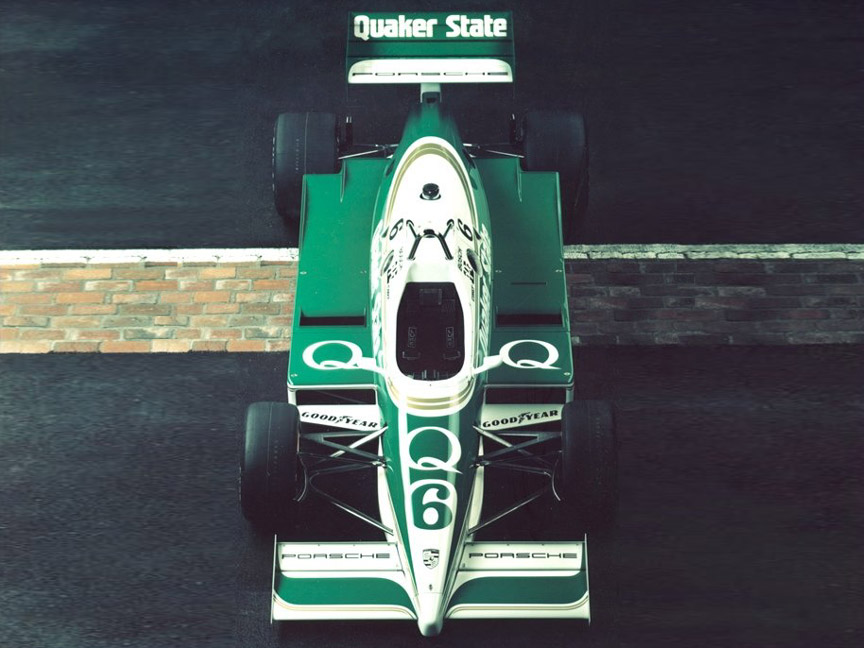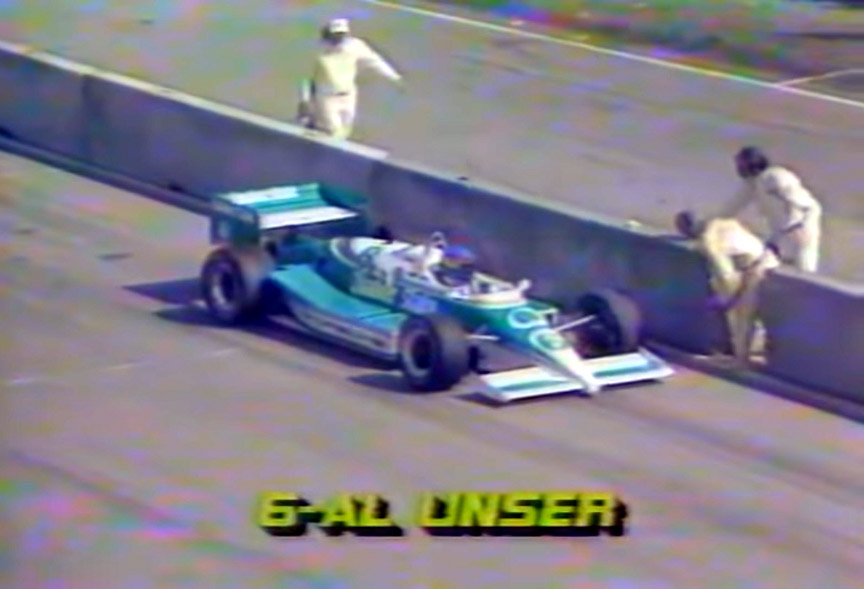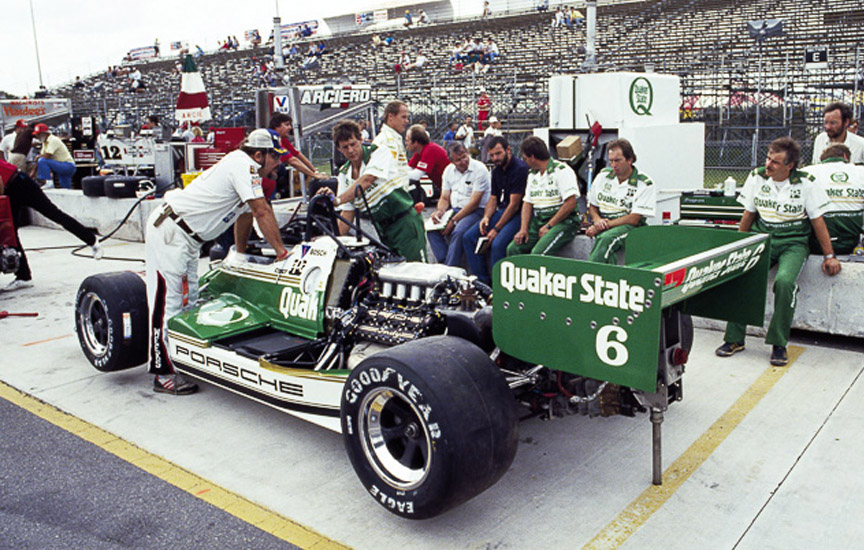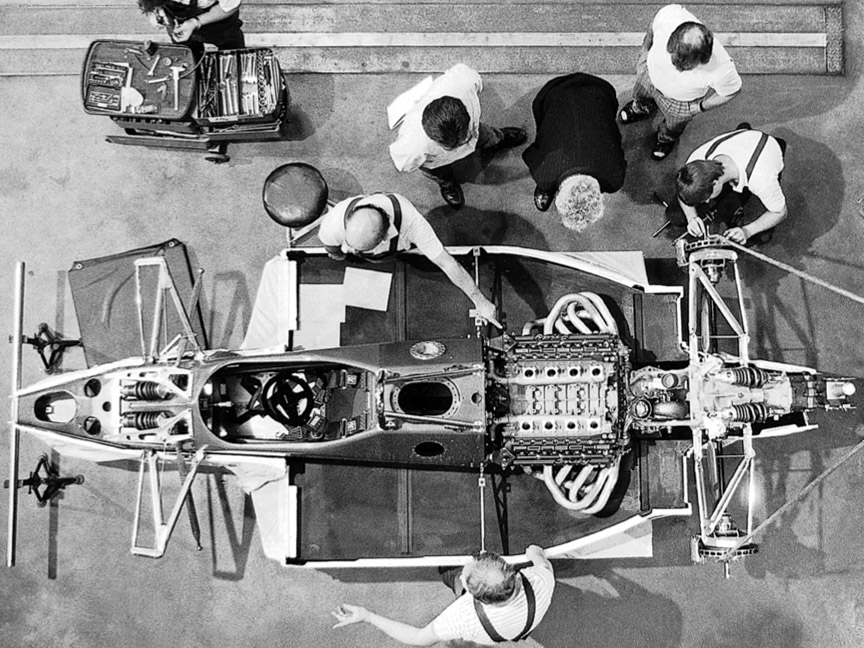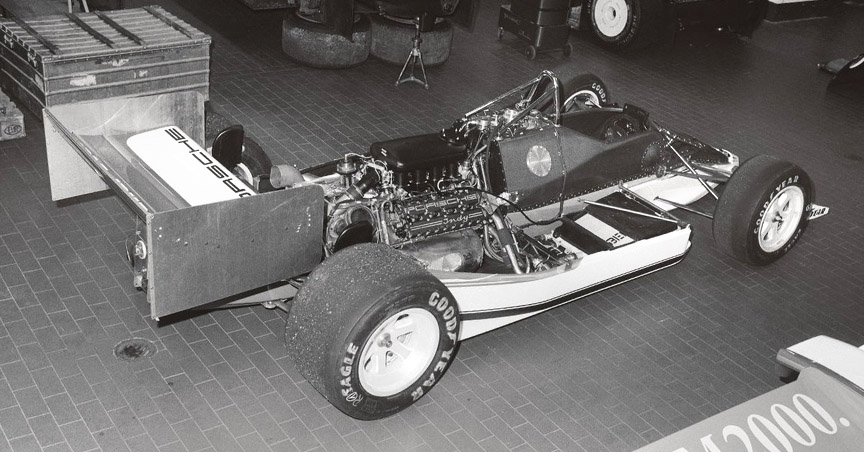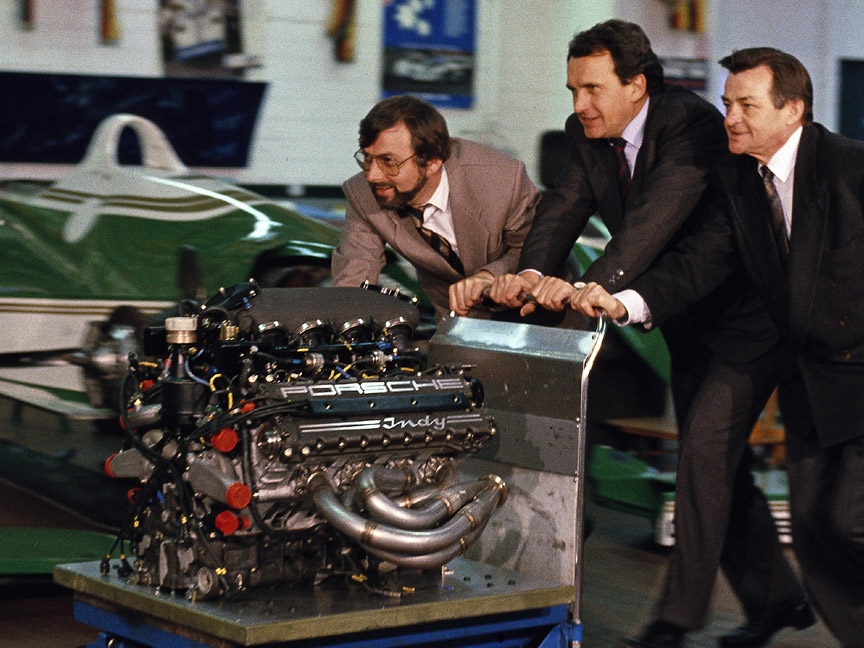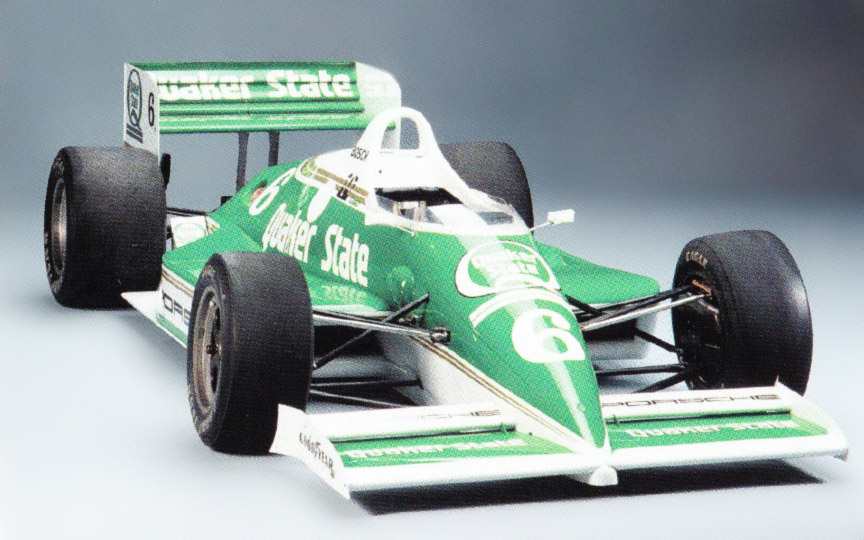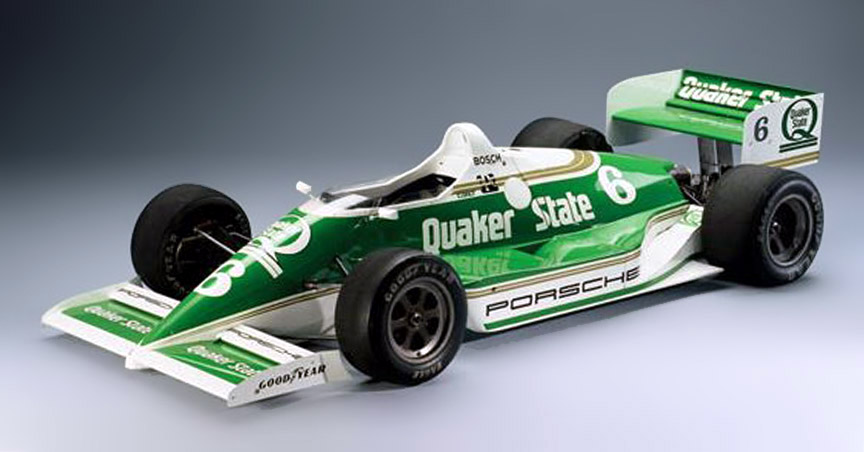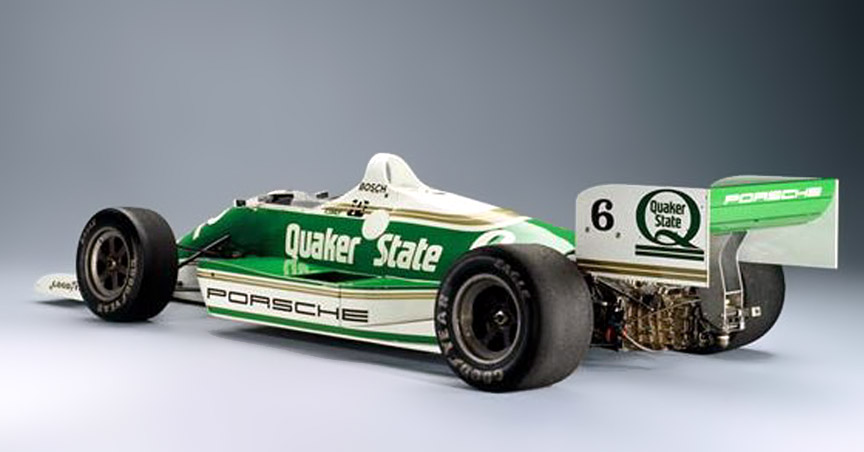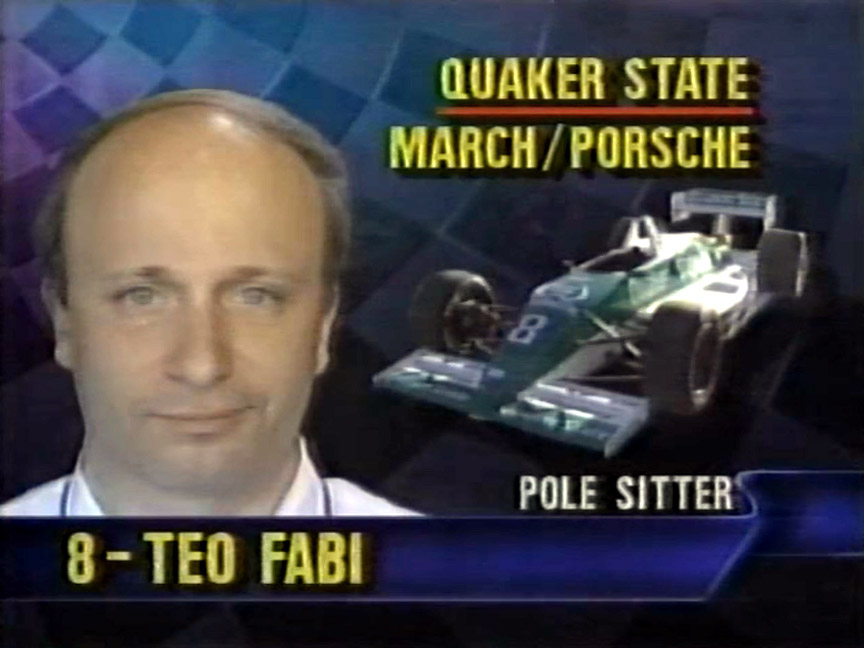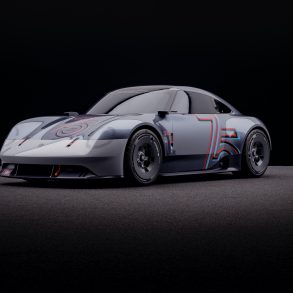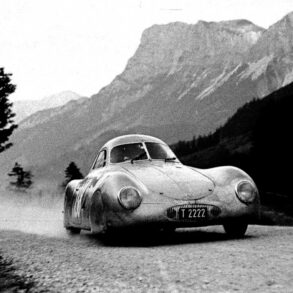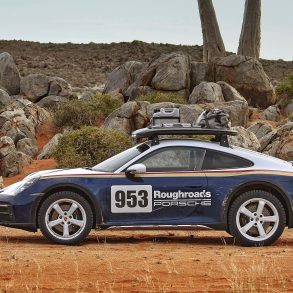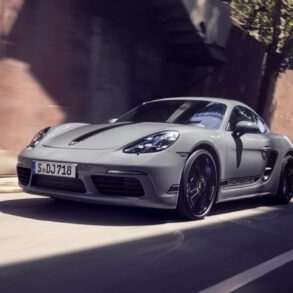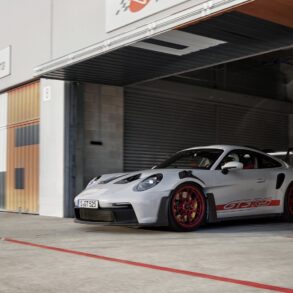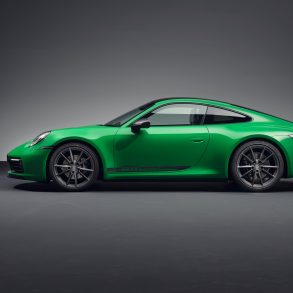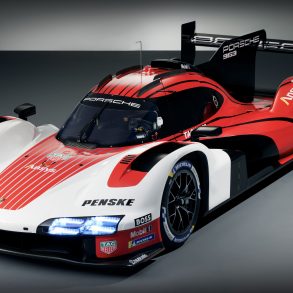Porsche 2708 Indy (1987, 1988)
Engine
- 2649 cc V8 single-turbo
- Porsche engine code: 9M0
- Fuel: methanol
- Max. boost pressure by regulations: 48″ of mercury (1.62 bar, 0.62 bar over atmosphere)
- Max. torque 342 lb-ft/465 Nm @ 8.500 rpm
- Max. power 551 kW @ 11.200 rpm
- Redline @ 11.800 rpm
CART
The CART regulations stipulated methanol as the fuel and a single turbocharger. CART stands for Championship Auto Racing Teams. This American open-wheel car racing sanctioning body operated the Indy Car series from 1979. In addition to ovals and road racing tracks, the CART races were held on street tracks and even on a track formed on an airport. So, different aerodynamic kits were needed.
The Story
The car got its name 2708 from its 2.7-litre V8 engine. The single-seater monocoque chassis made of composite aluminium sandwich and plastic sandwich material was constructed in Weissach. The Porsche 2708 was ready by October 1987, but the car was not properly tested, so it was not “ready”. Still, to get real racing experience and to satisfy the sponsoring oil company Quaker State, Porsche Cars North America entered the last two rounds of the 1987 CART season.
The first tests on USA soil were carried out at the Portland International Raceway. After that, the car was taken 800 miles south to Laguna Seca raceway in California for its first race. To test the car, Porsche team ran a total of 140 laps of practise! The commentators were excited about the entry of the Porsche Indycar. Although there were very few mechanical problems before the race, the car didn’t survive very far into the race.
Porsche Cars North America’s racing director Al Holbert commented: “We got water leak out of the water pump. It’s not determined whether it’s the engine itself or the pump. It can’t be repaired”. Driver Al Unser senior walked away in anger. A bit later, when the 1983 and 1985 CART Indy Car champion had cooled down, he commented: “Somewhat they’ve gone the wrong way. Now, whether they have or not, I’m not a designer and I’m not a aerodynamics man or anything else, so I really can’t say”. So, the engine was the smaller problem – the bigger problem was the bad car. Al Unser left the Porsche team.
Al Holbert, a 5-time IMSA champion (last time in 1986), planned to do the driving by himself on the last race of the 1987 season in Miami.
Unfortunately, the car performed poorly and Holbert failed to qualify for the 1987 Miami race. It was clear that the 1987 Porsche 2708 chassis was not competitive and a new car had to be created. The problem was the timing – the new car had to be created in the winter in Germany, so there were not enough chances to test it before the 1988 CART season would start in April in USA.
Porsche knew they don’t have time to properly sort out their own car and for any case, additionally, they fitted a March 88 with the Porsche engine. Porsche arrived at the first 1988 race in Phoenix with two cars – their 1988 version Porsche 2708 and a March. Half of the teams used March chassis and the other half used Lola chassis. It was soon clear that the 1988 version Porsche 2708 is not any good either and the March car had to be used for the qualification and the first race of the season. The 1988 Porsche 2708 was given to Porsche Museum.
The engine in the 1988 March was still the Porsche unit and the car had Porsche written on it. Porsche driver Teo Fabi finished the season on 10th place.
In 1989, a new March 89 chassis was used. Porsche’s research and sports director Helmut Flegl claimed: “We want to provide evidence that we can put the Americans in trouble on their very own territory after 20 months of learning and development”. At the Milwaukee Mile oval Teo Fabi finished 3rd. The season gave the Porsche-engined March finally a pole position at Portland road course on June 25, 1989. In his pole run, Teo Fabi made a track record. He was a fast driver.
Starting from pole position at the Portland Raceway, Fabi finished the 200 miles race fourth. At the Michigan Speedway oval Fabi finished 2nd and then came the second pole position on September 3, 1989, at the Mid-Ohio road racing course. This time Teo Fabi took the CART race victory. In addition to his skilled driving, it was assured by an odd refueling strategy. It remains the only CART victory for the Porsche engine. At the Road America race Fabi finished 2nd and together with five fourth places in the season, Fabi finished the 1989 CART championship on fourth place with 141 points, nine down from the third place.
For the 1990 season there was a new March car again. For the first time, two Porsche-engined cars were entered. The other driver was John Andretti. At the Meadowlands circuit the Porsches even had a 1-2 lead for a moment during a yellow flag period when the Porsche racing manager Derrick Walker didn’t call them in for refueling. Interestingly, Porsche team had a telemetry system, so they could monitor the car’s fuel consumption in live. Teo Fabi finished the race on 3rd place. At the street race in Denver, he managed to take the pole position, but in the race crashed into the tyre barrier. The 1990 season remained the last for Porsche at CART.
Details & Pictures
